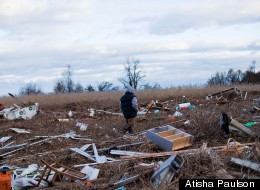 Given the size and power of the storm, much of the damage from the surge was inevitable. But perhaps not all. Some of the damage along low-lying coastal areas was the result of years of poor land-use decisions and the more immediate neglect of emergency preparations as Sandy gathered force, according to experts and a review of government data and independent studies.
Given the size and power of the storm, much of the damage from the surge was inevitable. But perhaps not all. Some of the damage along low-lying coastal areas was the result of years of poor land-use decisions and the more immediate neglect of emergency preparations as Sandy gathered force, according to experts and a review of government data and independent studies.
Authorities in New York and New Jersey simply allowed heavy development of at-risk coastal areas to continue largely unabated in recent decades, even as the potential for a massive storm surge in the region became increasingly clear.
In the end, a pell-mell, decades-long rush to throw up housing and businesses along fragile and vulnerable coastlines trumped commonsense concerns about the wisdom of placing hundreds of thousands of closely huddled people in the path of potential cataclysms.
On Staten Island, developers built more than 2,700 mostly residential structures in coastal areas at extreme risk of storm surge flooding between 1980 and 2008, with the approval of city planning and zoning authorities, according to a review of city building data by scientists at the College of Staten Island. Some of this construction occurred in former marshland along the island's Atlantic-facing south shore.
The 21 people who drowned in the storm surge on Staten Island were clustered along the south shore, and died after becoming trapped in their homes or while attempting to flee the rising water by car or foot, according to the New York City Medical Examiner's Office. While many of those who drowned lived in small bungalows built many decades ago, at least two victims were residents in a large-scale planned community completed in the 1990s.
TVNL Comment: This is a very important warning for what may lie ahead. Do not miss it.





 As parts of the central U.S. recover from a deadly outbreak of severe weather, a line...
As parts of the central U.S. recover from a deadly outbreak of severe weather, a line... The island of Puerto Rico is suffering another island-wide power outage, just months after a dayslong...
The island of Puerto Rico is suffering another island-wide power outage, just months after a dayslong... Letters went out to hundreds of workers at the National Oceanic and Atmospheric Administration (Noaa) on...
Letters went out to hundreds of workers at the National Oceanic and Atmospheric Administration (Noaa) on...






























